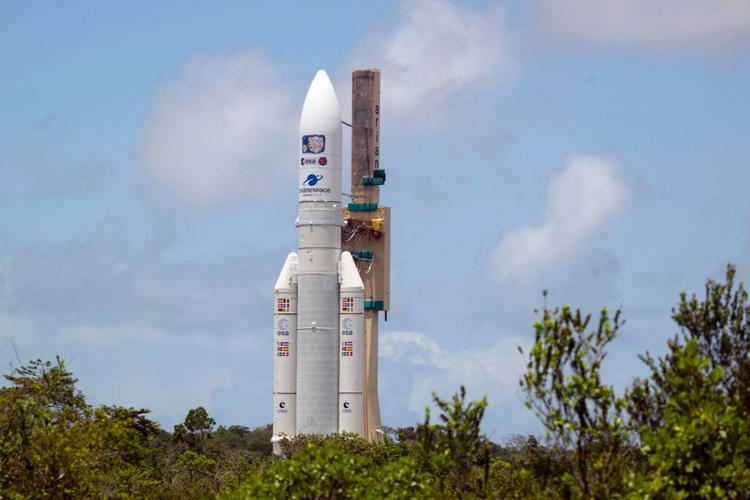
London, April 15: A European spacecraft rocketed away Friday on a decadelong quest to explore Jupiter and three of its icy moons that could have buried oceans.The journey began with a morning liftoff by Europe’s Ariane rocket from French Guiana in South America. Arianespace’s chief executive Stephane Israel called it “an absolutely perfect launch.”
But there were some tense minutes later as controllers waited for signals from the spacecraft nearly an hour into the flight.When contact was confirmed, European Space Agency’s Bruno Sousa declared from Mission Control in Germany: “The spacecraft is alive!”It will take the robotic explorer, dubbed Juice, eight years to reach Jupiter, where it will scope out not only the solar system’s biggest planet but also Europa, Callisto and Ganymede. The three ice-encrusted moons are believed to harbor underground oceans, where sea life could exist.
Then in perhaps the most impressive feat of all, Juice will attempt to go into orbit around Ganymede: No spacecraft has ever orbited a moon other than our own.With so many moons,— at last count 95 — astronomers consider Jupiter a mini solar system of its own, with missions like Juice long overdue.
“We are not going to detect life with Juice,” stressed the European Space Agency’s project scientist, Olivier Witasse.But learning more about the moons and their potential seas will bring scientists closer to answering the is-there-life-elsewhere question. “That will be really the most interesting aspect of the mission,” he said.
Juice is taking a long, roundabout route to Jupiter, covering 6.6 billion kilometers (4 billion miles).It will swoop within 200 kilometers (125 miles) of Callisto and 400 kilometers (250 miles) of Europa and Ganymede, completing 35 flybys while circling Jupiter. Then it will hit the brakes to orbit Ganymede, the primary target of the 1.6 billion-euro mission (nearly $1.8 billion).
Ganymede is not only the solar system’s largest moon — it surpasses Mercury — but has its own magnetic field with dazzling auroras at the poles.Even more enticing, it’s thought to have an underground ocean holding more water than Earth. Ditto for Europa and its reported geysers, and heavily cratered Callisto, a potential destination for humans given its distance from Jupiter’s debilitating radiation belts, according to Carnegie Institution’s Scott Sheppard, who’s not involved with the Juice mission.
“The ocean worlds in our solar system are the most likely to have possible life, so these large moons of Jupiter are prime candidates to search,” said Sheppard, a moon hunter who’s helped discover well over 100 in the outer solar system.The spacecraft, about the size of a small bus, won’t reach Jupiter until 2031, relying on gravity-assist flybys of Earth and our moon, as well as Venus.
“These things take time — and they change our world,” said the Planetary Society’s chief executive, Bill Nye. The California-based space advocacy group organized a virtual watch party for the launch.Belgium’s King Philippe and Prince Gabriel, and a pair of astronauts — France’s Thomas Pesquet and Germany’s Matthias Maurer — were among the spectators in French Guiana. Thursday’s launch attempt was nixed by the threat of lightning.
Juice — short for Jupiter Icy Moons Explorer — will spend three years buzzing Callisto, Europa and Ganymede. The spacecraft will attempt to enter orbit around Ganymede in late 2034, circling the moon for nearly a year before flight controllers send it crashing down in 2035, later if enough fuel remains.Europa is especially attractive to scientists hunting for signs of life beyond Earth. Juice will keep its Europa encounters to a minimum, however, because of the intense radiation there so close to Jupiter.
Comments